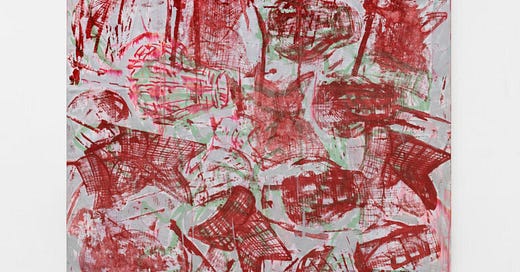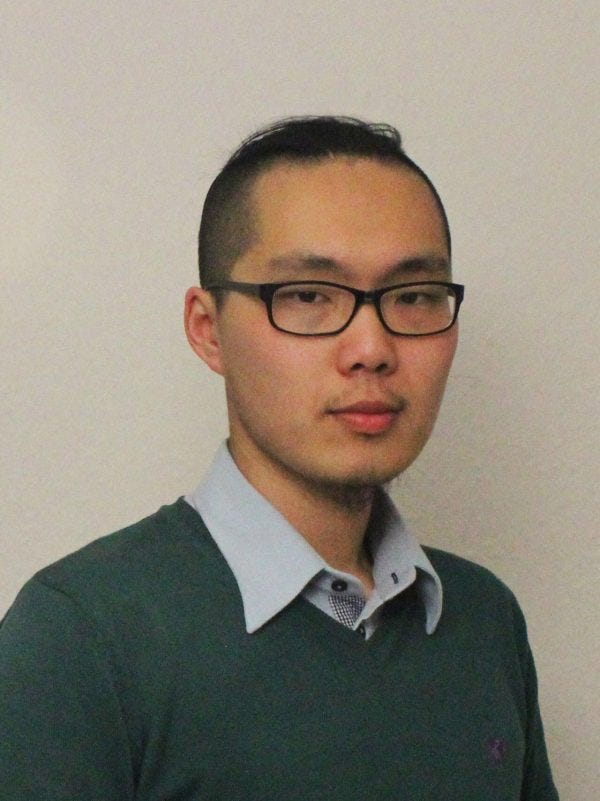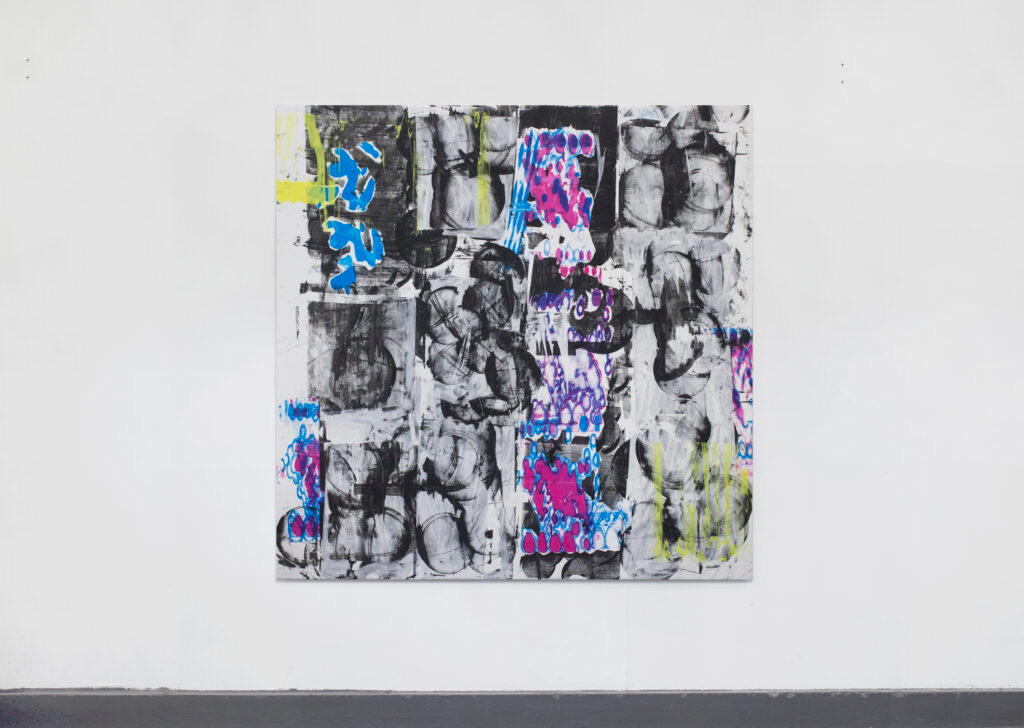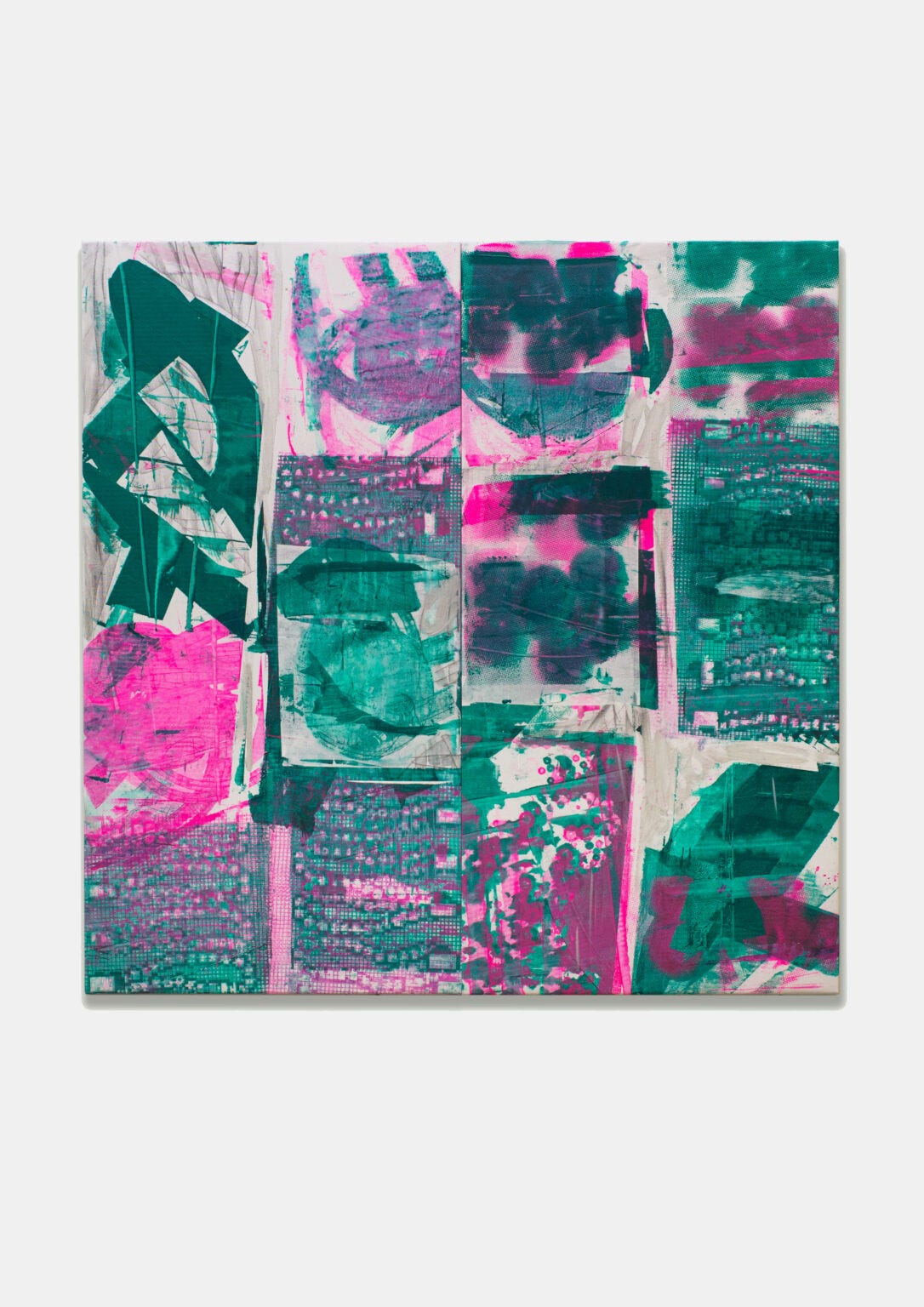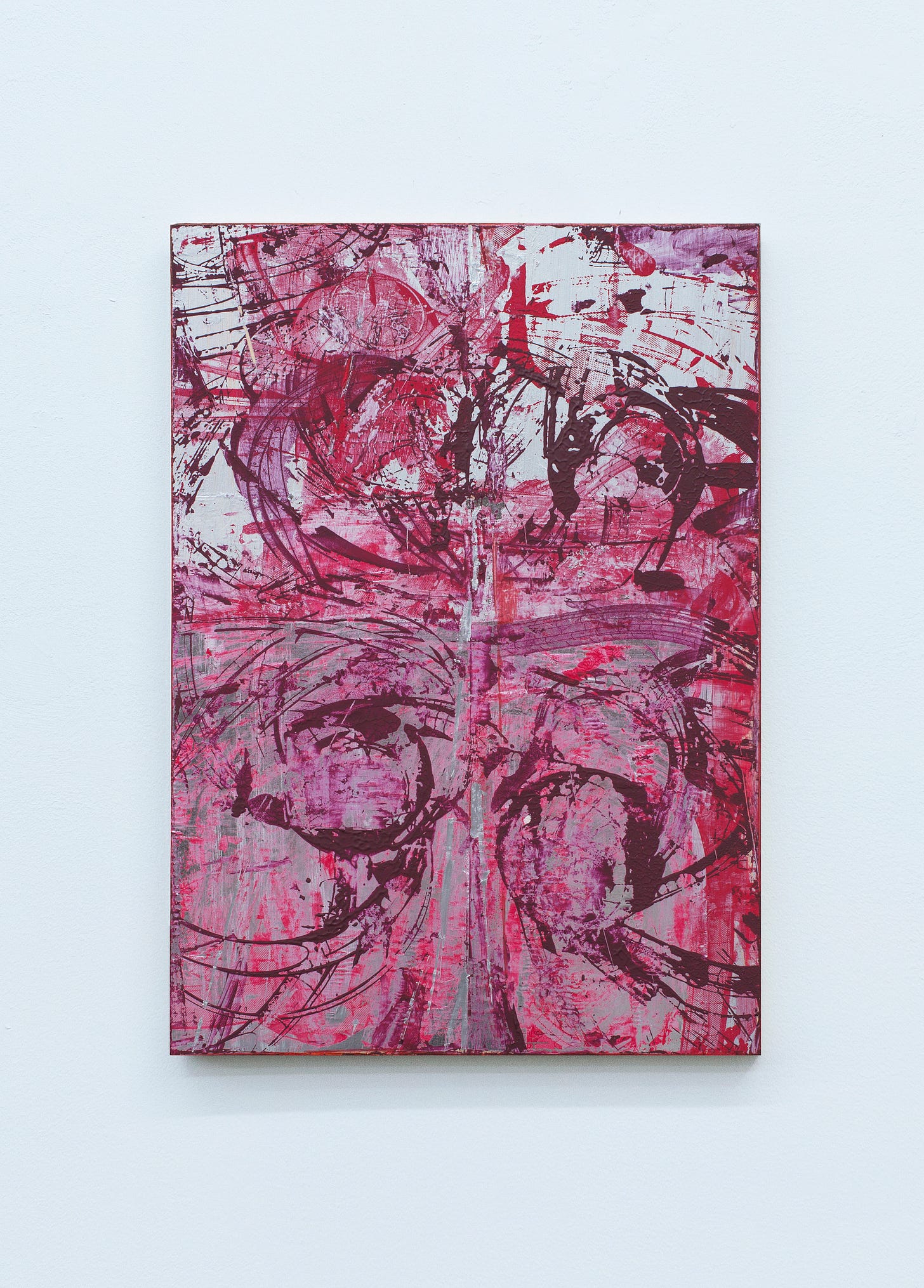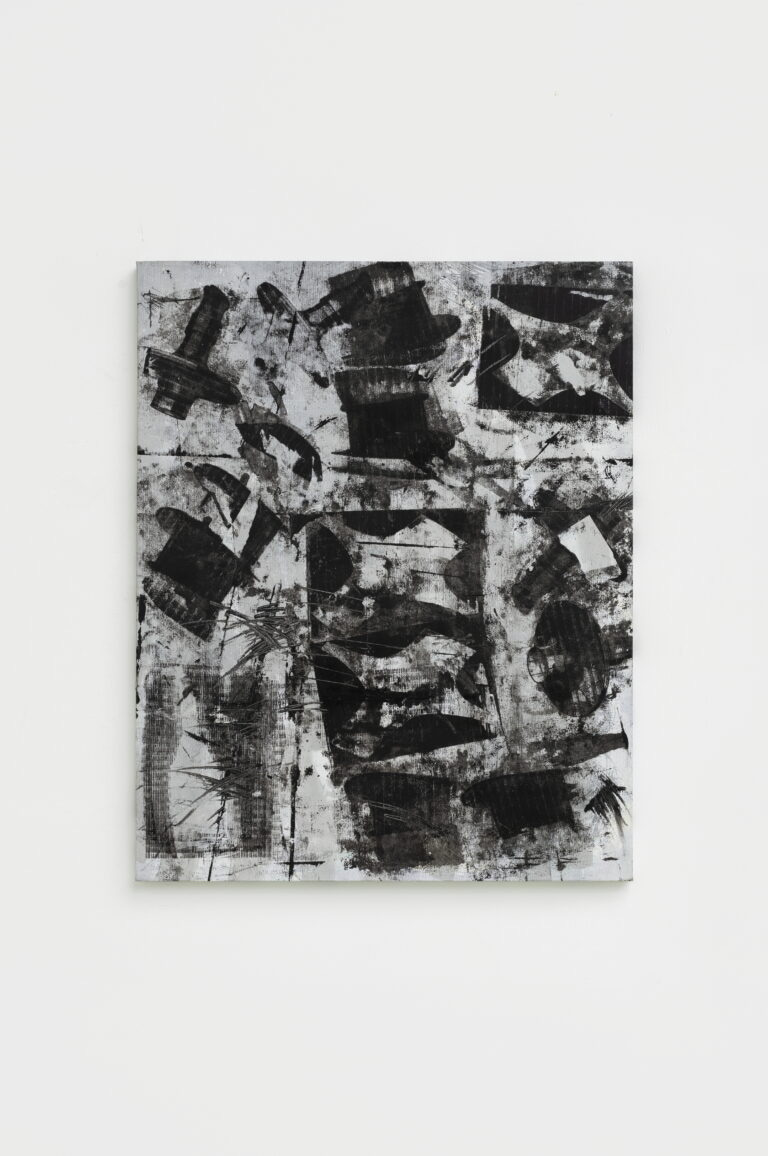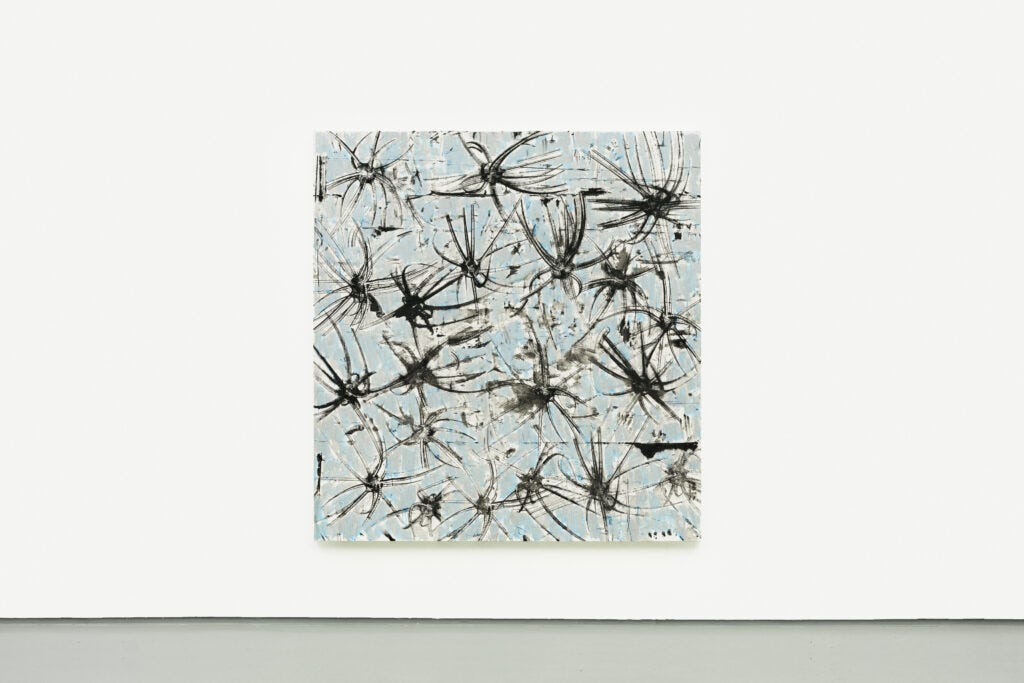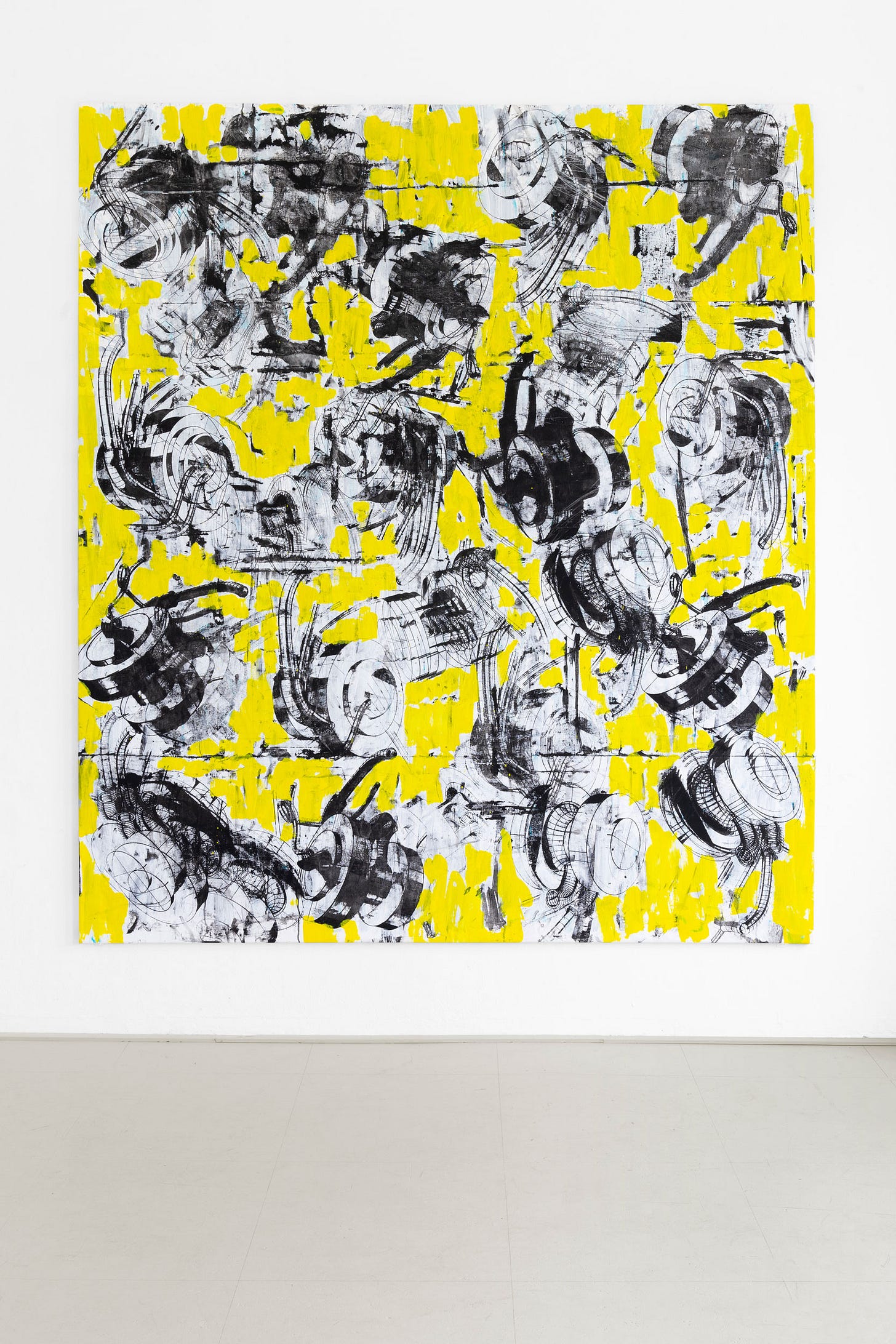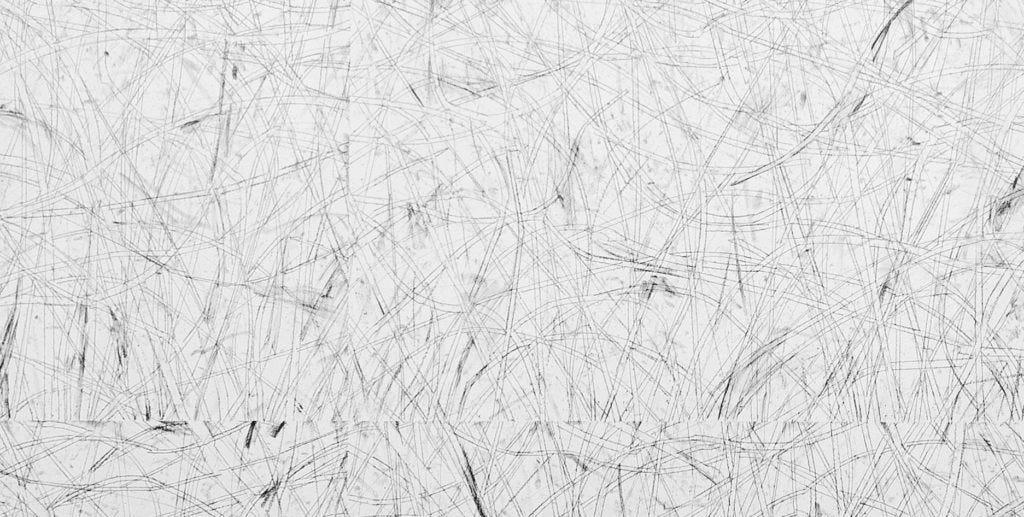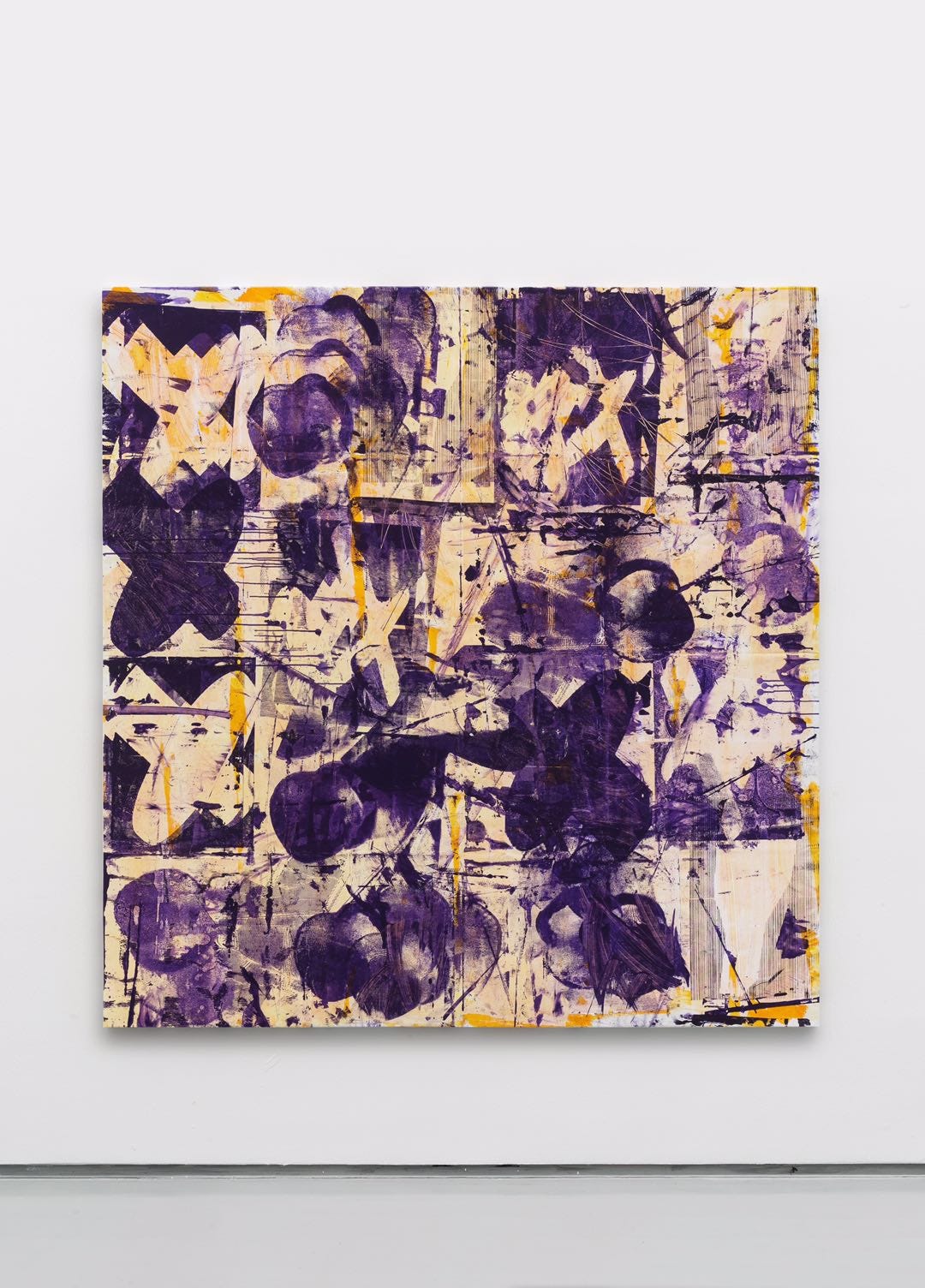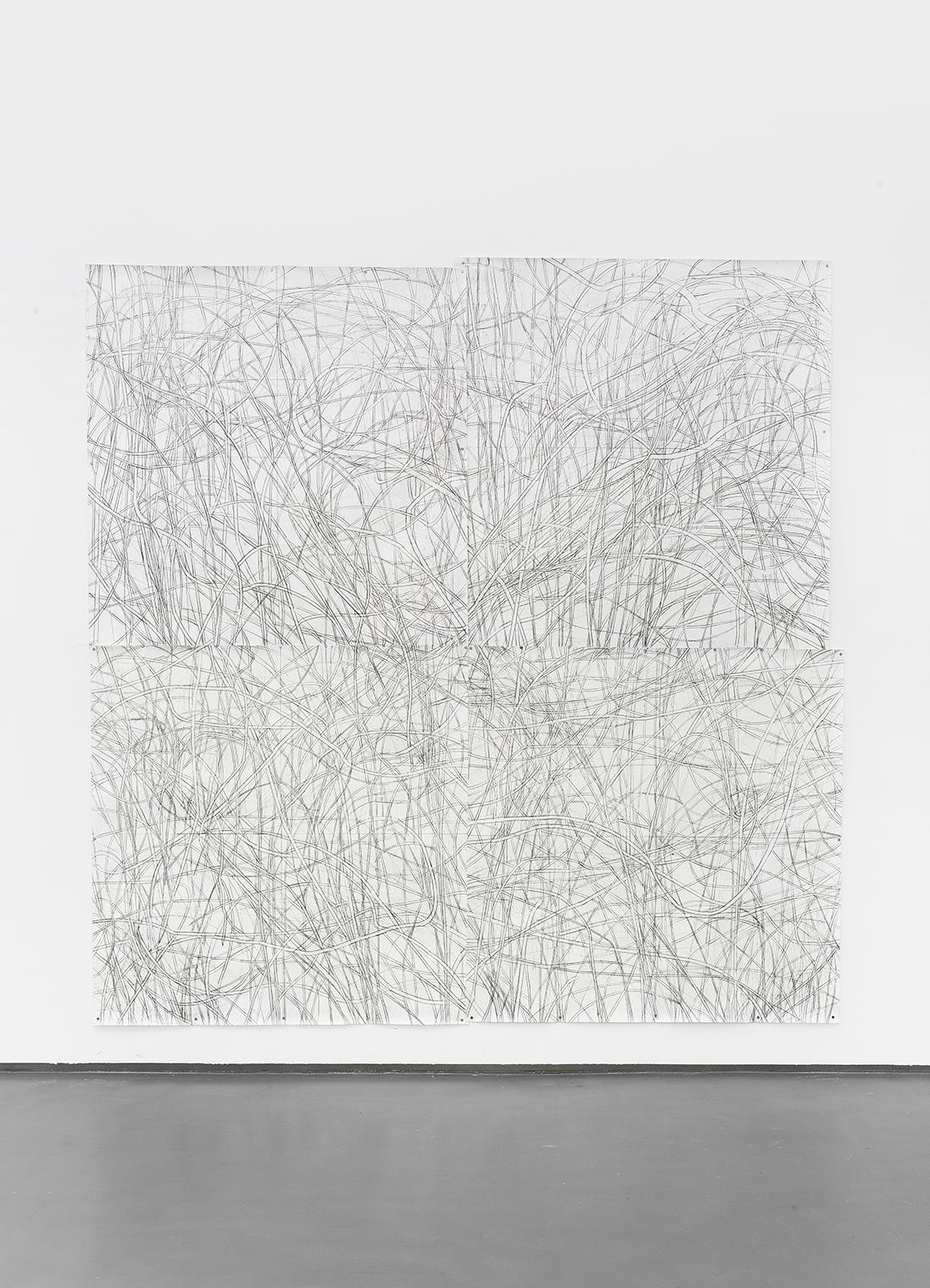1990: Born in Beijing
2009: Graduated from the Affiliated High School of the Central Academy of Fine Arts
2013: Completed studies at the Third Studio of the Oil Painting Department, Central Academy of Fine Arts
2016: Enrolled in the Free Art Department at the Bremen Art Academy
2017–2018: Participated in the master–student program at the Bremen Art Academy, studying under Stephan Baumkötter
http://yu-linhan.com/
One striking feature of Yu Linhan’s work is its methodical production process—a distinct sequence of stages: image capture, hand drawing, and replication (printmaking). He begins by photographing the forests near his German residence, then enlarges and reprints select portions of these black-and-white images. These X‐ray–like photographs unveil an intricate web of branches emerging from the shadows. Next, on a separate 1.5‑by‑1.5‑meter sheet, he meticulously sketches the forms of the branches in pencil—each segment rendered independently and without intentional connection—only to later assemble them into a unified whole. Remarkably, the completed composition suggests that the individually executed branch forms have somehow become organically intertwined.
In the final stage of his process, involving screen printing, he transfers his hand‑drawn designs onto canvases—and even onto walls. The resulting pieces gradually assume the character of abstract, symbolic diagrams. Deviating from the refined printmaking typical of his contemporaries, he opts for discarded, soiled screens. In the relentless process of reprinting his work, inadvertent ink blots, smudges, and fractures accumulate; the more he duplicates, the more these “errors” propel the work toward unforeseen directions.
Yu Linhan , a native Beijinger who advanced from the affiliated high school of the Academy of Fine Arts to the Academy itself, found himself disillusioned with its pedagogical system. Consequently, he pursued a master’s degree at the Bremen Art Academy in northwestern Germany—a school shaped by the Bauhaus tradition. As a young Eastern man venturing alone into a distant foreign land, the pressures and loneliness he experienced rendered him exceptionally sensitive to his surroundings. As he stated in an interview, “I have always been attentive to my current state of being, my physical condition, and the impact of my new environment on me.” He channels these sensations into his art with a measured, restrained approach.
During his studies abroad, however, he encountered health challenges. He suffered from a “mild obstruction” of his respiratory system—a psychosomatic breathing difficulty induced by overwhelming stress. When he saw the term inscribed on a doctor’s prescription, he later appropriated it as the title for one of his works. The experience of illness, coupled with the uncanny atmosphere of hospitals, further inspired him to create pieces such as Deep Breath (《深度呼吸》)and Unknown Things (《未知事物》), with the hospital environment becoming a continual source of creative inspiration. Residing in the rain-soaked Bremen region, he observed the dense pattern of raindrops on car windows, prompting him to sketch myriad diagonal lines in pencil—ultimately culminating in the work Rain (《雨》).
At the core of his creative practice lies the concept of replication in its various forms—a process governed by mechanical procedures that minimizes subjective human intervention, rendering his method dispassionately neutral. By adhering to a rigorous protocol, he deftly adjusts variables—from the substrate material and media to distance, time, frequency, and pressure—each subtle modification producing unexpected nuances. Through successive transfers, the images are extricated from their original context and ushered into a liminal space where the recognizable and the ambiguous converge, resonating with his profound emotional memory. Concurrently, the incidental “errors”—ink spots, smudges, fractures, bleeds, misprints, and color omissions—evolve into vital expressive elements, serving as the work’s “soulful eye” .
Yu Linhan revels in capturing the remnants left by rationality; he meticulously constructs his artistic procedures to embrace the serendipitous accidents and mistakes that occur along the way, so that the entire composition unfolds as though it were a tapestry woven from the miscalculations of reason. In his latest works, he has conjured imaginary mechanical organisms—figures that oscillate between human organs and medical devices—rendered with the precision of industrial modeling and drafting, and ultimately imposed onto the canvas via hand‑held printing. A perennial theme in his oeuvre is the negotiation between the human body, emotion, and an artificial yet unfamiliar reality; within his pieces, rationality, sentiment, manufactured objects, and the societal implications of materiality interlace, leaving behind intriguing and thought‑provoking traces.
Scroll down to the works
往下滑看作品
Break the Wall, 200x200cm, 2023
Pigment, 100x100cm, 2023
If a tree falls in a forest, 200x200cm,2022
If a tree falls in a forest, 200x200cm,2022
切片4,42X30CM,木板丙烯拼贴,丝网,2021/SLICE 4, 42X30CM, ACRYLIC ON WOOD, COLLAGE, SCREENPRINT, 2021
必然2.0/ INEVITABILITY 2.0,布面丙烯综合技法/MIXED TECHNIQUES,ACRYLIC ON CANVAS,100X80CM,2021
蓝图5,布面丙烯综合技法,2021,230X200CM/CONTROL PLAN 5, 2021, ACRYLIC ON CANVAS, SILK-SREEN PRINTING, MARK-PEN, FLAT PAINT, 230X200CM
装甲4,布面丙烯,马克笔,哑光喷漆,2021,70X60CM/ARMOR 4, 2021, ACRYLIC ON CANVAS, MARK-PEN,70X60CM
与陌生共存7,2020,布面丙烯综合技法,210X200CM/FOREIGN ORGAN 7, 2020, ACRYLIC ON CANVAS, SILK-SREEN PRINTING, MARK-PEN, FLAT PAINT, 210X200CM
与陌生共存3,2020,布面丙烯综合技法,230X200CM/FOREIGN ORGAN 3, 2020, ACRYLIC ON CANVAS, SILK-SREEN PRINTING, MARK-PEN, FLAT PAINT, 230X200CM
精准限度,300X600CM,铅笔墙面,2018/LIMITS OF ACCURACY,PENCIL ON WALL,EXHIBITION VIEW AT KÜNSTLERHAUS SOOTBÖRN HAMBURG
DETAIL
紫药水5/GENTIAN VIOLET 5,布面丙烯综合技法/MIXED TECHNIQUES, ACRYLIC ON CANVAS,210X200CM, 2019
ÜBER IRRSINN 2, 300X300CM, PENCIL ON PAPER, 2016/ 超越疯狂 2,铅笔纸面

